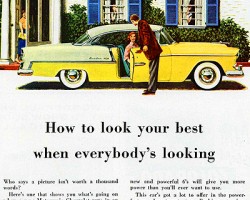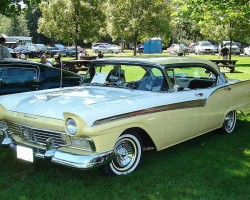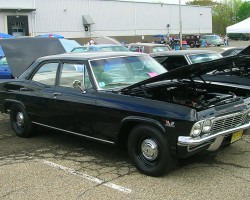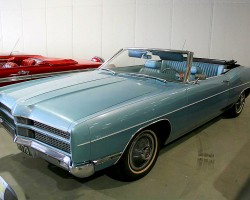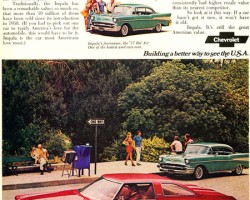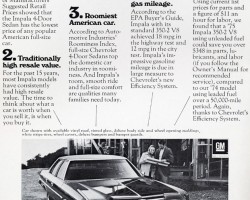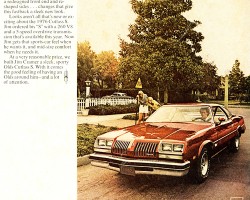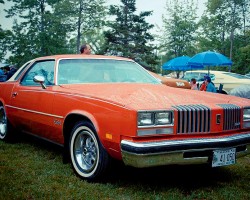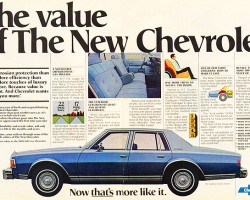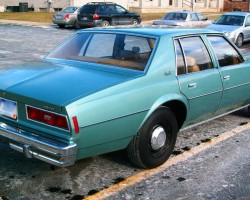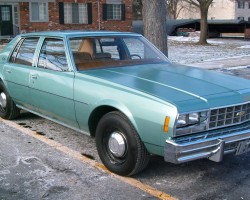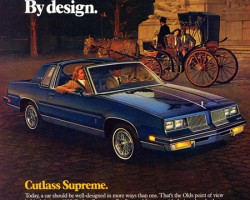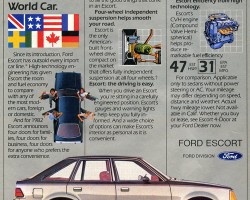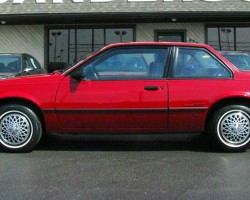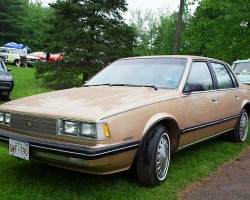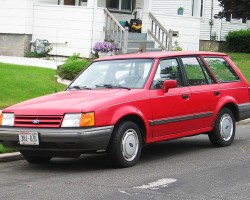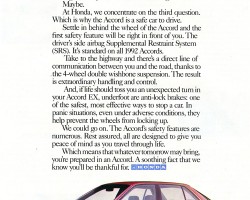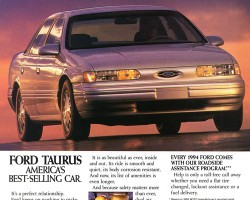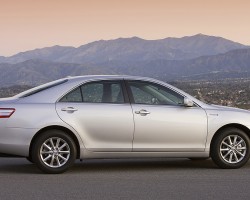Analyzing the last 60 years of automotive trends, some very interesting data can be found among the specific and ever-changing car models Americans chose to buy the most of each year since 1949.
(See slide show at end of article for pictures and advertisements of the best selling cars)
AVERAGE SELLING PRICE OF THE NUMBER ONE SELLING CAR (IN TODAY’S DOLLARS, ADJUSTED FOR INFLATION)
The typical out-the-door price of the best-selling car in 1949 was $14,000*. As America settled into prosperity the following decade, cars became better equipped and more costly as a whole, averaging between $18,000* to $19,000* from the late ’50s through 1978.
The 1979-83 Olds Cutlass Supreme best-seller dropped the average to between $15,000* and $16,000* and economy cars in the ’80s fluctuated around $12,000* to $13,000*. With the Ford Taurus ascending to number one in 1989, prices jumped to $23,000* and have remained steady there since. (* = adjusted for inflation)
THE BEST-SELLERS THEMSELVES
- With the exception of three years (1957, 1970, and 1976), the full-size Chevrolet Bel Air / Impala / Caprice had a four decade span in the number one position from 1949 through 1978. Ford borrowed the title in 1957 with their comparatively sized Fairlaine model, beating Chevrolet by 28,000 units. However, that was only a 2% victory when considering the larger volume each of them commanded at the time. A two-month United Auto Workers strike against General Motors in 1970 cost Chevrolet over 250,000 Impala sales and the number one title that year.
- In 1976, the mid-size Oldsmobile Cutlass overtook the full-size Impala/Caprice due to growing sales to single baby-boomers in their late twenties. Full-size Chevrolets recaptured the title the next two years after a downsizing redesign for ’77 made them into trimmer, more sensible family cars.
- Fast-forward three years, and a downsized Olds Cutlass put that nameplate back on top again for 1979, ’80, ’81, and ’83 – edged out in 1982 by the newly introduced Ford Escort compact. Recession and skyrocketing fuel prices had caused an increase in demand for smaller, more economical cars. Even though Honda, Toyota, Datsun, and Volkswagen had been building a fan base with multiple small car offerings in the ’70s, Ford’s offering of only one subcompact resulted in a high enough number of sales of it to achieve the number one position. GM sold more total small car units than the Ford Escort that year – however because those sales were spread over nine different models, none of them individually could top the Escort.
- 1984 and 1985 were dominated by the Chevrolet Cavalier, one of GM’s most direct competitors to the Ford Escort. The mid-size Chevrolet Celebrity captured the flag in 1986, and the Ford Escort (still basically unchanged from its 1981 design) regained the number one sport for 1987 and ’88. With the exception of 1991 when the Honda Accord won the sales race, Ford’s own Taurus was the best seller from 1989 through 1996.
- From 1997 through 2011, the Toyota Camry has been the number-one seller every year, except 2001 when it was beaten by the Honda Accord.
NUMBER OF UNITS SOLD BY NUMBER ONE BEST-SELLERS IN THE U.S.
Things used to be much easier for General Motors and Ford. Fewer models of cars from fewer carmakers overall left buyers with fewer choices, and with virtually no foreign competition best-sellers typically sold in excess of 1.8 million units in the 1950s. Even as the total number of all cars sold in the U.S. had steadily increased, market share of each has decreased steadily since peaking in the 1950s. The 1971 Impala was the last number-one to reach over 1 million sales, and by 1980 the number was half that. From 1985 on, best-sellers have remained constant at around the 400,000 units mark.
AVERAGE WEIGHT OF THE NUMBER ONE SELLING CAR IN THE U.S.
Average weight of the number one car in 1949 (Chevrolet) was 3,100 pounds, growing to 3,600 by 1959 (Chevrolet) and to 3,750 by 1969 (Chevrolet). As the best-selling Impala reached its longest and widest point after a 1971 redesign, average weight peaked at 4,250 pounds through 1975. Being one size smaller, both the Oldsmobile Cutlass Supreme of 1976 and the downsized Impalas of 1977-78 tipped the scales at around 3,750 pounds. With exception of the Ford Escort, Chevy Cavalier and Celebrity (all at or below 2,500 pounds), average weight of best-selling cars since 1979 has been a steady 3,200 pounds.
SIZE AND HORSEPOWER OF ENGINES MOST OFTEN EQUIPPED IN NUMBER-ONE SELLING CARS IN THE U.S.
The most popular engine actually fitted into the majority of number-one sellers rose steadily from 3.6 liters to 5.0 liters in 1970. It reached its largest point from 1971-75 at 5.7 liters, when all full-size Chevrolets featured a 350-cubic-inch (5.7 liter) V8 standard. And while larger engines were offered optionally, the majority of 1976, 1979 and 1980 Olds Cutlass Supremes rolled out of the factory equipped with smaller 4.3-liter V8s. Downsized 1977-78 Chevrolet Impalas / Caprices most often had 5.0-liter V8s. From the early 1980s until today, most popular engine choices have been four-cylinders averaging 2.5-liters in size (with 3.8-liter V6s reigning supreme in the years the Ford Taurus was on top).
Horsepower (calculated by post-1971 measuring standards) crept steadily upward from 1949, doubling by its peak in the early 1970s of about 200 and dropping to 150 for the late ’70s. During the 1980s, horsepower averaged a weaker 100 horsepower until the 1989 Taurus brought the number back to the 150 mark, where it’s remained since.
For more info: see Motor Trend, March 2010 issue.
- Chevrolet Bel Air / Impala models were the number one best seller from 1949 – 1956. (Photo credit: General Motors Corporation)
- Ford borrowed the title in 1957 with their comparatively sized Fairlaine model, beating Chevrolet by 28,000 units. However, that was only a 2% victory when considering the larger volume each of them commanded at the time.
- (1965 Chevrolet Biscayne 396) Chevrolet regained the number one spot with its full-size Bel Air / Biscayne / Impala models from 1958 – 1969. Shown here is a 1965 Biscayne.
- A two-month United Auto Workers strike against General Motors in 1970 cost Chevrolet over 250,000 Impala sales. As a result, the number 1 title for 1970 only went to Ford full-size 500 / Galaxie models.
- This 1974 Chevrolet Impala ad reflects the automaker’s confidence in the model’s long reign as America’s number-one selling car. (Photo credit: General Motors Corporation)
- Chevrolet full-size models took the number one title each year again from 1971 through 1975. (Photo credit: General Motors)
- This ad for the 1976 Oldsmobile Cutlass Supreme shows a perfect example of the buyer demographic that made mid-size “personal luxury” cars so popular during this time. (Photo credit: General Motors Corporation)
- The ’76 Cutlass stole the best seller title from the ’75 Impala, only to lose it again one year later.
- After losing the number one spot for one year during 1976 to the Olds Cutlass Supreme, the downsized 1977 Caprice/Impala regained top sales position. (Photo credit: General Motors Corporation)
- 1977 CHEVROLET IMPALA base model
- The Impala held the number one sales spot for 1977 and 1978. This would be the Impala’s last time as a number one seller after losing it in 1979 to the Olds Cutlass Supreme.
- After being downsized for 1978, the Olds Cutlass Supreme put that nameplate back on top again for 1979, ’80, ’81, and ’83 – edged out in 1982 by the newly introduced Ford Escort compact. The 1983 Oldsmobile Cutlass Supreme marked the last year America’s best-selling car featured rear-wheel-drive and did not have a transversely mounted engine. (Photo credit: General Motors Corporation)
- A 1982 Ford Escort advertisement. This was the first year that the best-selling car in America was front-wheel-drive and had no engine options larger than a four-cylinder. (Photo credit: Ford Motor Company)
- 1984 and 1985 were dominated by the Chevrolet Cavalier, one of GM’s most direct competitors to the Ford Escort. (Photo credit: S. Lawrence)
- The mid-size Chevrolet Celebrity captured the flag in 1986, and lost it to the Ford Escort the following year. (Photo credit: M. Brown)
- The Ford Escort ranked number one again for 1987 and 1988. Here, a 1988 Escort wagon is shown. (Photo credit: A. Turnbull)
- Although this Honda Accord advertisement is for a ’92 model, 1991 Accords were identical. 1991 marked the first year an import acheived the number one selling status in the U.S. (Photo credit: American Honda)
- With the exception of 1991 when the Honda Accord won the sales race, Ford’s own Taurus was the best seller from 1989 through 1996. This 1994 ad makes potential buyers well aware of its top selling status. 1996 marks the last year the Taurus, and any American cars, have reached the number-one spot. (Photo credit: Ford Motor Company)
- From 1997 to 2011, the Toyota Camry has been the number-one seller every year except 2001 when it was beaten by the Honda Accord.

